After months of anticipation, I finally had the camera in my hands. Would it's 21 megapixels live up to the hype? Would it deliver the stunning 30”x40” prints that I have craved since the day I gave up my large format camera and switched to digital? Would it deliver superior noise performance compared to digital cameras I have used in the past? The answer to all of these questions is simply: yes! In fact, I am so impressed with the Mark II that I just can’t stop myself from saying—and I can’t believe I am about to do this—this camera takes real good pictures! Seriously though, the Mark II is a powerful and robust tool to help unleash your inner creative beast.
Many other reviewers have conducted quasi-scientific resolution and noise tests, and posted their thorough and extensive results online already. I do not intend to bore you with a repeat performance. Besides, I have never felt that controlled, indoor test images of resolution charts and stuffed animals really tell you how a camera will handle in real-world situations. Nature photography is conducted in conditions that are often far from ideal, and my own particular style of shooting often has me working at the edge of light, where a camera’s hidden defects will often rise to the surface. So instead of an objective review of the camera, I present here what will likely be viewed as a somewhat more subjective review—just one working stiff’s reaction to this camera’s features and capabilities, tested not in a controlled environment at home, but rather in the chaos of the field.
I have owned many Canon digital cameras over the years—including the original Digital Rebel, Canon 20D, 1Ds Mark II, and Canon 50D—and even destroyed a camera or two in my time (the 1Ds Mark II makes a great $8000 paperweight, by the way). Shooting a variety of nature subjects, ranging from landscapes to wildlife, I suspect that many of the features and performance characteristics that are important to me will be important to you too, so I hope you will find my subjective reactions to this camera useful. Unfortunately, I have owned the 5D Mark II for only a short period of time, so my conclusions are necessarily provisional in nature, subject to further evaluation with more field use. Furthermore, I was unable to make any trips to grand scenic locations in time for this review, so you’ll just have to accept my humble offering of a few images made locally, the best I could do in short notice!
Note that all images in this review have been shot using raw, converted in Adobe Raw Converter, and edited in Adobe Photoshop CS4. I have only applied default sharpening and noise reduction in Adobe Raw Converter, and have not applied any sharpening or noise reduction in Photoshop.
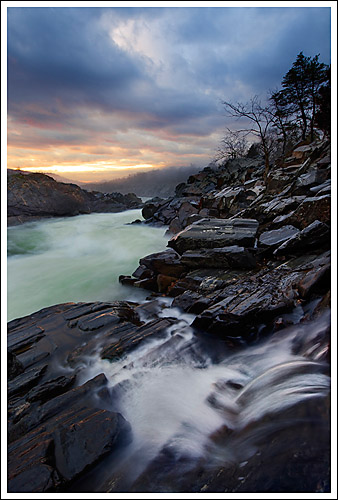
Resolution
Let’s start here—after all, resolution is all that matters, right? Well, maybe not . . . but it is important. Simply put, image files from this camera exceed the quality of medium format films and are beginning to encroach into large format film territory. Stunning 30”x45” prints are attainable with this camera. Don’t believe me? Well, let’s look at some image samples, and you can judge for yourself.
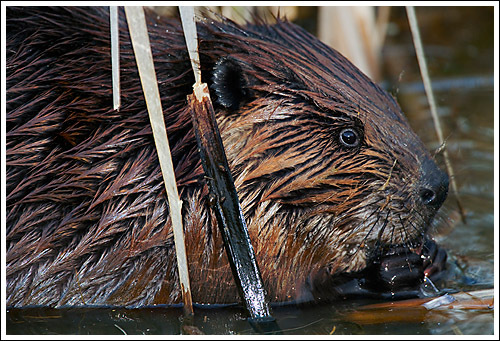
At first glance, there is nothing particularly special about this beaver image—it is, after all, just an oversized rodent, sufficiently cute and fuzzy that we forget for a moment that it is a close cousin to the rat. But the devil is in the details, as they say, so let’s take a close look at a portion of this file, at its native resolution, viewed at 100%.
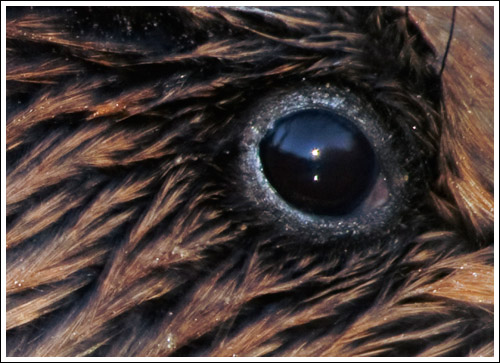
Not so bad for a rat, eh? This 100% crop actually tells us a lot about how well the file will hold up to enlargement: it fairly closely approximates how well the image would look enlarged and printed at 30”x45”. Pretty stunning if you ask me! This image would make a wonderfully detailed wall-sized print after sharpening is applied—except for the fact that I do not want any wall-sized prints of rats in my house!
Let’s take a look at another image, this one of a mallard drake.
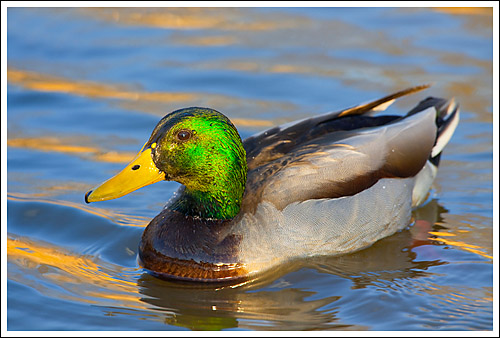
And, once again, a 100% crop.
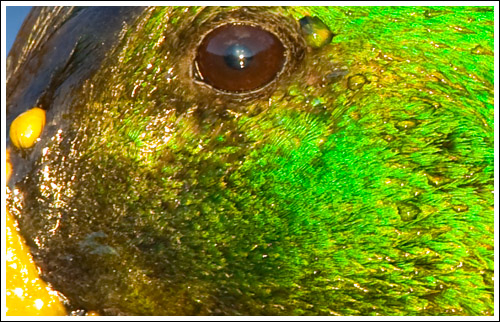
So what are my conclusions about resolution? Mated with good lenses, and shot in optimum conditions, the Canon 5D Mark II is capable of producing stunning large prints. But let’s take a look at less than optimum conditions. When shooting in contrasty light, how well does the Mark II handle the dreaded noise monster?
Noise
I am very impressed with the way this camera handles noise at low ISOs. Properly exposed test shots at 100, 200, and 400 ISO are very clean with little or no discernable noise. But let’s face it, nature photography doesn’t always lend itself to proper exposure! So let’s take a look at some real world shooting conditions, which are less than ideal.
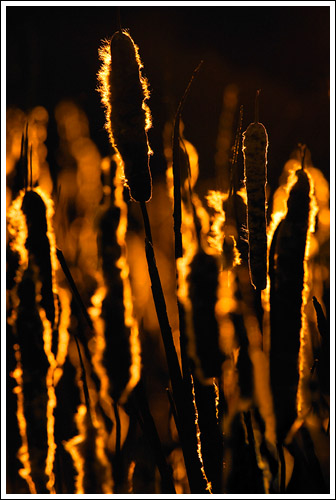
The image above is about as punishing on a file, noise-wise, as you can get. The cattails are back-lit by the setting sun, so there is a lot of contrast in the image. In order to prevent the highlights from being overexposed, I was forced to drop my exposure quite a bit, resulting in a histogram that was bunched up on the left. As many of you know, digital cameras generate noise in tones that live on the left side of the histogram. With an exposure like this, I was forced to not only push my histogram to this very noisy place, but then later increase exposure in these shadow areas (using a Photoshop curves adjustment) to get them back to a proper exposure. To add insult to injury, the wind was blowing pretty hard, forcing me to use a higher ISO than I typically would like for difficult lighting conditions, in this case ISO 400. All together, these are less than ideal circumstances for a digital camera, and any noise hiding in the shadows will be revealed as clear as the light of day. With previous cameras I have owned, this sort of shot would be a nightmare in post processing. Well, enough talk, let’s look at a 100% crop and see the results.
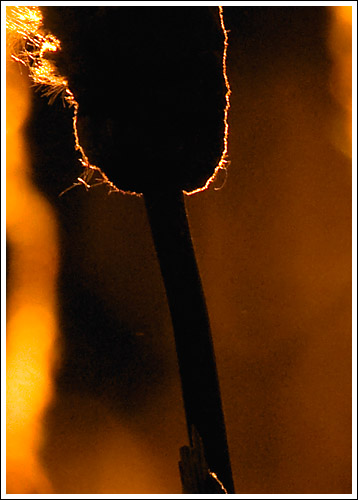
Indeed, there is some noise in the tones that I raised with the curves adjustment, but the noise is very manageable and can be easily removed with a noise reduction filter. With other cameras I have used, trying to raise the exposure of these shadow areas would have generated a lot more noise. Overall, I say not bad, especially considering the circumstances!
In more optimum shooting conditions, I have tested the Mark II at a maximum ISO of 800. Note that although this image was backlit, I used flash to create fill light in the shadows, thus moving the image’s shadow pixels back into the “safe zone” of the histogram.
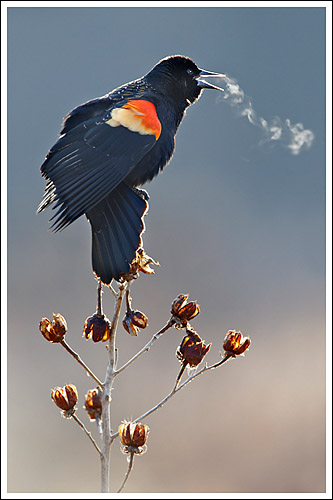
As you can see from the 100% crop below, the file is amazingly clean. I expect that if I had not used fill flash, however, the noise generated in the shadow areas of this image would have been more significant than what we saw at 400 ISO.
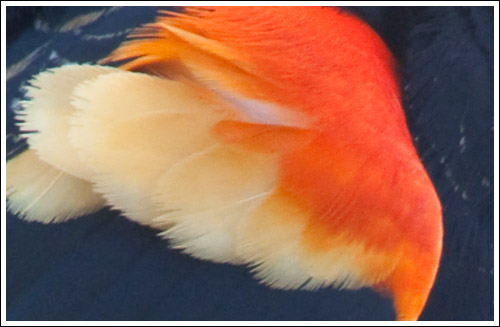
Speed & Autofocus
Okay, this is where the camera is relatively weak. At less than four frames per second, and with a noticeable shutter lag, this camera is not going to excel at fast action photography. The autofocus is not as good as Canon’s 1 series camera, but does reasonably well. Accordingly, I suspect I will not be pulling this camera out of the bag first and foremost when shooting wildlife. But nonetheless, with its stunning 21 megapixels, I’m sure I will be using it for stationary wildlife shots and slower moving subjects. So far, I have not been disappointed.
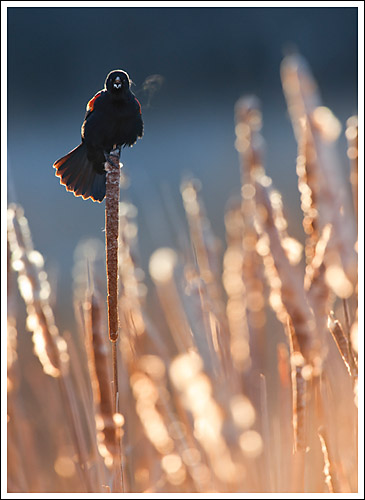
This image, shot at ISO 400, makes a stunning large print, rich in color and detail—in fact, I have already made one!
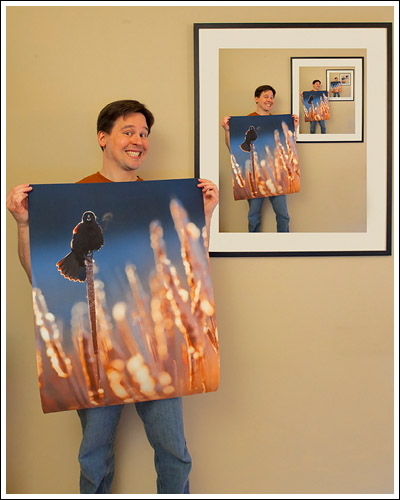
Battery Power
Canon has increased the 5D’s battery size and improved its life for the Mark II. These improvements are necessary for the battery to keep up with the power demands of Live View and video. If you use Live View sparingly, the extra power can be a real bonus, especially when shooting in cold temperatures or using long exposures. To test the batteries, I took a long night exposure in below freezing temperatures (sorry, it was on my back porch—my two attempts to take star trail photographs with the Mark II from the summit of Old Rag Mountain, my favorite “local” star location, were thwarted first by wickedly icy trails, and second by 40 mile-an-hour winds). After one hour of continuous exposure, I still had plenty of battery power left: the camera’s battery monitor (which is purportedly fairly accurate) showed at least half power remaining. My guess is that one battery alone has enough juice to power the camera for a two to three hour exposure, even in below freezing weather. Using two batteries in the optional vertical grip, I think that four to five hour continuous exposures are possible. Simply amazing! Of course, if you use Live View a lot, battery capacity will be much less.
Live View
It stuns me to still hear some photographers scoff at Live View, deriding it as a useless bell-and-whistle feature. Live View is an amazing tool. I use it for critical focusing, to determine exposure before I make the shot, and for awkward setups where it is not possible to get my eye to the viewfinder. The Mark II’s generously large LCD screen is perfect for zooming in to 100% to check focus throughout the scene, even when the depth-of-field preview button is pressed, allowing me to verify depth of field.
Sensor Cleaning
The Mark II comes with an internal sensor cleaner that vibrates the sensor when you power the camera on or off. In theory this is a great idea, which should help keep the camera sensor free of dust. In practice, after using the camera for only a few weeks, I already have a large dust fiber embedded on the sensor. Other users have reported similar dust accumulation, but note that most dust spots that appear are eventually removed after the camera has been turned on and off a few times. Only time will tell how useful the internal sensor cleaner really is.
Video
The Mark II also allows you to shoot stunning high-definition (HD) video using your full complement of lenses. This may not be a critical feature for most photographers, but if you are interested in dabbling in multimedia, then you will find this bonus feature to be incredibly useful.
It seems really cool to me that I can shoot video using my 500mm lens with a 1.4x teleconverter! Or, if I am so inclined, to shoot using a super-wide angle lens, using any of the filters I own. The versatility of having HD video built in to a DSLR system is incredible.
Durability
I have only owned the camera for a short while, so I cannot speak with any authority about the Mark II’s long-term durability. According to Canon, they beefed up their weather sealing compared to the original 5D. Although not are rugged as the 1 Series cameras, I found the original 5D to be adequately protected from the many punishing elements I often find myself working in—it even once survived a short dunk in some oozing wet mud on the shores of salty Mono Lake. So I hope that the Mark II will be able to handle anything I throw at it! I should note that some early Mark II users have reported anecdotal failures of the camera in cold or wet weather. Once again, only time will tell if these problems are systemic rather than the result of user error (c’mon folks, if it starts to rain, cover your camera!). So far, I have not had any problems.
“Black Dots”
The so-called “black dots” problem reported by early users has been fixed. Basically, some users reported finding small black dots in high contrast areas of their images. Canon now offers a firmware upgrade to fix the black dot phenomenon. I have seen no black dots in any of the images I have taken. Other users have similarly reported that the firmware upgrade works as intended. Problem solved!
Conclusions
The 5D Mark II is an amazing camera, perfect for landscape shooters and adequate for a lot of wildlife work. While it may not be for anyone, I’m very pleased that I now own one. Its excellent noise characteristics and high resolution files, coupled with an affordable price (compared to 1 Series cameras, that is), make it a classic in the making.
Comments on NPN digital nature photography articles? Send them to the editor.
Ian Plant lives in the Washington, D.C. area and has been photographing the natural world for fifteen years. His work has appeared in a number of books and calendars, as well as national and regional magazines, including Outdoor Photographer, National Parks, Blue Ridge Country, Adirondack Life, Wonderful West Virginia, and Chesapeake Life, among others. His sixth and most recent book is the critically acclaimed Chesapeake: Bay of Light. Ian’s work has also appeared in five other books of the Wonder and Light series. Ian is co-owner of Mountain Trail Press, a publisher of fine art nature photography books and calendars.
To see more of Ian's work, visit Mountain Trail Photo. The Mountain Trail Photo Team consists of some of the top nature photographers in the country, whose mission is to educate and inspire others in the art of nature photography. There you will find team member images; articles on photo techniques and destinations; and information on workshops in some of America's most beautiful places. Also visit the Team's blog for a more eclectic mix of images and musings.